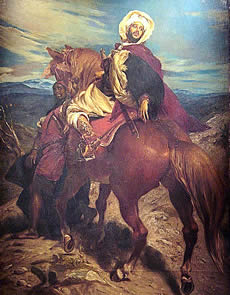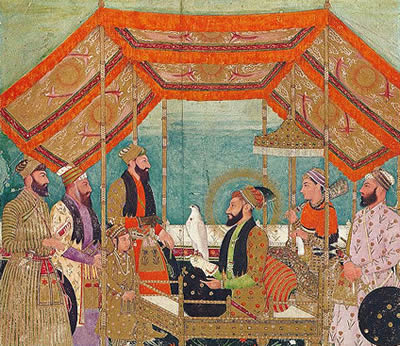 |
| Janissaries |
Following the custom of expanding empires everywhere, the Ottoman sultans had routinely taken one-fifth of the booty taken in conquest for themselves, enslaving some of those conquered as footsoldiers for further military conquests.
However as the empire took control of predominantly Muslim territories, Islamic legal injunctions against the enslavement of other Muslims made the old practice impossible. Therefore, Muslim theologians under Murad I (reigned 1362–89) innovated a levy where by young non-Muslim boys were taken into the sultan’s service. These enforced recruits were called Yeni Cheri, new soldiers, or Janissaries.
On a rotation system of about every five years, a levy or devshirme of young boys between the ages of eight and 20 was collected from mostly Christian areas, especially in the Balkans. All the recruits were taught Turkish and converted to Islam.
The most able of the young boys were taken to be educated in the palace to become servants and, sometimes, high officials within the vast Ottoman bureaucracy. The rest were given rigorous military training and became a formidable fighting force. The Janissaries owed their sole allegiance to the sultan.
The Ottoman Empire was one of the first so-called gunpowder empires, and the Janissaries were known for their skills with the most advanced weaponry of the age. The Janissaries enjoyed considerable legal privileges, including the right to own land and to pass on property to their heirs under Islamic law.
Gradually the Janissaries increased in numbers and power and became the core of the Ottoman army with increased pay and benefits. Spread throughout the empire, the Janissaries lived communally in military barracks and were the main protectors of the Ottoman government throughout the provinces.
When the empire was at its zenith, the Janissaries were loyal protectors and champions of the sultan. However, as the empire declined and the sultans became increasingly weak and corrupt, the Janissaries became a political force in their own right and frequently rose up in armed rebellions.
The overturning of the huge cooking pots used by all Janissary garrisons became the signal of such revolts. In some instances, the Janissaries even overthrew sultans to replace them with candidates of their own selection.




















